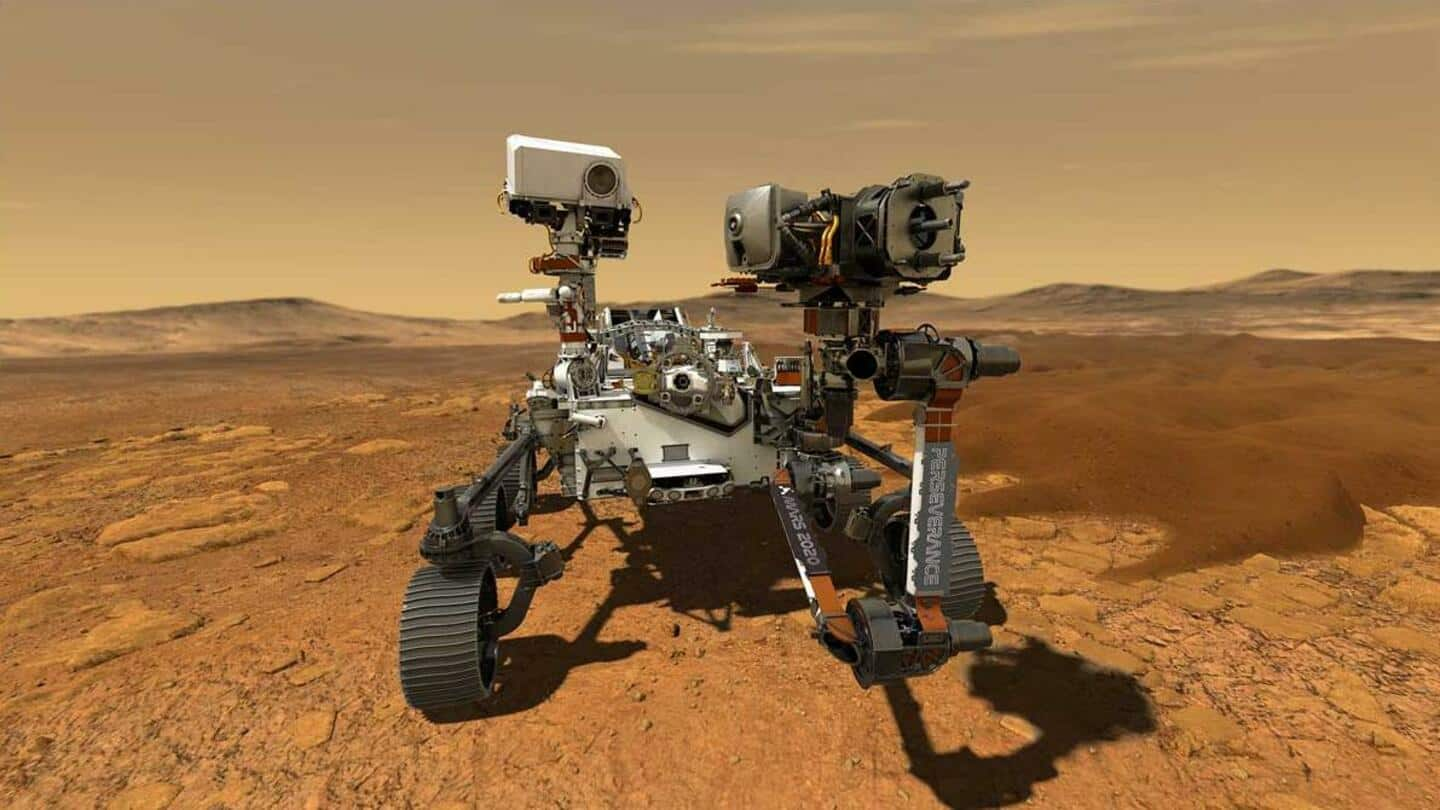
NASA's Perseverance Rover has filed the first Martian weather report
What's the story
We now have a better understanding of what the weather is like on Mars, thanks to Perseverance Rover. The Rover measured the average air temperature at the Jezero Crater, situated near the planet's equator, to be approximately minus 55 degrees Celsius. Further, it was found that dust devils were "more abundant" at the Jezero Crater region than elsewhere on the red planet.
Context
Why does this story matter?
The Perseverance Rover is helping us understand Mars and its conditions in such great details. Just last month, it recorded the sound of a "Martian dust devil" for the first time. And now, we have a better idea of the weather conditions on Mars. The Rover landed on the red planet in February 2021 and has already provided so much vital information.
Monitoring
The Rover's MEDA sensors determine critical weather parameters on Mars
Perseverance Rover's onboard Mars Environmental Dynamics Analyzer (MEDA) instrument comprises a set of sensors that measure temperature, pressure, wind, humidity, and properties of the dust that is always in suspension in Mars' atmosphere. These sensors are embedded in the rover's neck, deck, and some on its interior. The weather report is based on observations made during the mission's first 250 sols (Martian days).
Information
The observations focus on the lower part of Mars' atmosphere
Covering Mars' northern hemisphere, from spring into early summer, the results focus on the "atmospheric surface layer (ASL)." ASL, the lower part of Mars' atmosphere that directly interacts with the planet's surface, is where energy and mass exchanges between the surface and atmosphere occur.
Official words
One Martian day is approximately 40 minutes longer
"The pressure and temperature of the Mars atmosphere oscillate with periods of the Martian solar day (somewhat longer than the Earth's, it averages at 24 hours 39.5 minutes) and with their submultiples, following the daily cycle of sunshine greatly influenced by the amount of dust and the presence of clouds in the atmosphere," said Agustín Sánchez-Lavega, co-researcher on the Mars 2020 mission.
Details
The temperature on Mars greatly varies between day and night
While the average temperature at Jezero was recorded to be minus 55 degrees Celsius, the temperature can vary greatly between the day and night, by as much as 50 to 60 degrees Celsius. Fluctuations in the air pressure were also reported, both daily and prominently during seasonal changes, as the carbon dioxide frost at the poles sublimated due to the early summer heat.
Winds
The Martian winds reversed their direction at night
The Rover measured a daily wind cycle with strong gusts of 82 feet per second around midday. Around the afternoon, weaker winds of 23 feet per second were recorded, while at night, the winds reversed their direction. Was it always breezy on the planet? No, between 4 a.m. and 6 a.m. local time on Mars, there were no winds blowing through at all.
Dust devils
Martian dust devils can form whirlwinds more than 100m wide
Coming to the dust devils on Mars, Ricardo Hueso, from the University of the Basque Country, said these dust storms "can be very large, forming whirlwinds more than 100 meters in diameter." "With MEDA we have been able to characterize not only their general aspects [their size and abundance] but also to unravel how these whirlwinds function."